-
Posts
4,728 -
Joined
-
Last visited
-
Days Won
117
Content Type
Profiles
Forums
Resource Library
Events
Gallery
Blogs
Store
Community Map
Posts posted by Mayner
-
-
Inspired by Cumbres & Toltec Rio Grande Southern re-enactment of a two engine freight with DRGW 463 pretending to be RGS 455, the Jackson County had to follow suit with one of the first trains of the Spring season in the humid Waikato rather than semi-arid South West.
463 started slipping in light drizzle and actually needed 348s help to move its train over the road
My 348 is actually a DRGW C16 pretending to be a larger C19 similar to 315 so another element of pretence. Must look at adding smoke units!!!!!!!!!!
-
 4
4
-
-
Six wheel coaches appear to have been used in main line, suburban and branch line passenger trains at least up to the Emergency when a large number of ex-GSWR 6w coaches (mainly 3rd Class) were withdrawn/converted to carry turf. Apart from the few remaining branch lines with passenger services six wheel coaches continued in use on Dublin & Cork suburban passenger services and excursion trains until replaced by more modern stock or services ended. Cork retained a rake of six wheel coaches for use on excursion trains into the early 1950s. .
There is a 1947 photo of a J15 departing Cobh for Cork in 1947 with an excursion train made up of at least 9 6 wheelers and a couple of bogie coaches in Irish Railway in Colour Vol2 (Tom Ferris Midland Publishing 1995)
There is a 1952 photo (photographer unknown) of a Midland 2-4-0 arriving in Sligo with a train of 7 6 wheelers possibly on an excursion from Ballaghadereen.
Redundant coaches that passed into Departmental use appear to have been mainly used by the Civil Engineering and Signal & Electrical Departments as mobile workshops and dormitories rather than the loco department. The Loco Department had mobile Dormitories used at major cattle fairs, these were special purpose vehicles rather than converted passenger stock.
-
 2
2
-
 1
1
-
-
Nice modelling and very atmospheric.
I wonder was the signal box re-built with an apex roof by CIE or IE.?
Wicklow signal cabin appears to be the odd man out with Arklow, Gorey and Rathdrum retaining curved corrugated iron roofs.
-
 1
1
-
 1
1
-
-
Harry Connaughton was a Dublin based professional model maker who produced (mainly O Gauge) models of Irish locos and stock mainly in the 1970s, he passed away during the mid 1980s.
His models included batch built GNR Compound & JT 2-4-2T in 4 & 7mm scale and various commissions in O Gauge including a number of GNR (I) T2 4-4-2T, CIE J5 Midland Cattle Engine, J19 Midland Standard Goods, & 650 Class 2-4-0, GNR non-passenger and goods stock including bogie Parcel Vans, Bread Vans, Goods Brake and a large fleet of GNR cattle wagons.
One of my first introductions to railway modelling was watching Harry shunting of scratchbuilt O gauge cattle wagons and non-passenger stock with a pair of GNR 4-4-2T at an early MRSI exhibition in Phibsborough, the most striking thing was the sense of momentum and smoothness of operation compared with contemporary OO.
-
 1
1
-
 1
1
-
 1
1
-
-
The loco looks like a model of 402 following its re-build into a 2 cylinder loco in the 1920s.

The whole saga of the re-building of the 400s was prolonged and complicated, the original locos were supposed to have been heavy on coal and expensive to maintain. The GSR scrapped 3 of the 4 cylinder locos (apparently as surplus to requirements) and gradually re-built the remaining locos into 2 cylinder form between 1928 & 37.
The 1st 3 three rebuilt were basically completely new locomotives apart from using the existing boiler and bogie, 402 was unique among the rebuilt engines with its straight running board the next two engines rebuilt 401&406 had low running boards and Caprotti valve gear,

The final four re-builds were more-economic retaining their original frames and driving wheels and introduced a step in the running board above the motion bracket.


The rebuilding of the 400 Class into two cylinder locomotives appears to have been successful with 402 remaining in service into the early 60s.
-
 6
6
-
 1
1
-
-
Looks like Accucraft UK have already released a County Donegal-IOM railcar to go with the IOM steam locos and stock
-
 2
2
-
-
On 10/1/2019 at 1:27 AM, jhb171achill said:
I know this is VERY pedantic..... but I can't help wondering why they offer a GSR loco with red con-rods! L
Most likely because Accucraft believe that there is sufficient demand to produce a version with red rods, a high proportion of sales of the locos are likely to be to large scale modeler (outside the UK or Ireland) who want to add an Irish loco or train for their collection or garden railway rather than modellers that are specifically interested in the Irish Narrow Gauge.
The models are likely to be only really accurate for the locos in their current re-built/preserved condition and visually are quite different from their pre-amalgamation condition. No 3 Lady Edit received a new boiler with a distinctive flat topped dome in the Mid 1920s, while No2 Kathleen originally a "Main Line" engine like No3 was rebuilt during the 1940s with the "Tramway" cab and superstructure from No 7 Violet and boiler from No 1.
Lady Edit appears to have run at some stage with red rods while in preservation in the United States

I guess the new locos are a good motivator to cull my collection of N and 4mm models and concentrate on the larger scale.
-
 2
2
-
-
Interesting massed produced Irish narrow gauge live steam ! The price is not particularly high by large scale standards.
Accucraft is based in the States with its own factory in China and produces a large range of American, Continental and British outline narrow gauge locos and stock.
It will be interesting to see if they will produce some matching rolling stock to run with the C&L 4-4-0T
Its good to the see it planned to donate the profits from the sales of the locos in Ireland to the Ulster Folk and Transport Museum and the Cavan & Leitrim.
Many of the Irish narrow gauge classes have been batched produced in live steam including the C&L 4-4-0 Archangel (Stewart Browne) & T&D 2-6-0T (John Campbell).
http://grw.trains.com/~/media/import/files/pdf/4/8/b/irish_narrow_gauge.ashx
-
 3
3
-
 1
1
-
-
ONe-TRAK appears to have been devised in the late 1990s to allow more realistic operation (within an American context) and more realistic scenery by avoiding the "tile' effect of traditional modular layouts, the 15" group adapted a similar approach to 4mm British outline branch line modelling in the 1980s and more recently the "One Track Minds Group" modelling in New Zealand Railways in S Scale. One Track Minds went for 2' wide modules to allow reasonably realistic modelling of typical New Zealand Bush and Footrot Flats countryside.
Modeler's essentially building small layouts with a modular interface.
I experimented with modular construction in N gauge with open farmed baseboards about 20 years ago though never got beyond the development stage in terms of scenery

Small yard with wooded mountain backdrop 12" wide 3'6" modules.
Passing siding open frame construction 2--12"X4' modules, the original plan was to add an additional module to allow longer trains to cross.
Tall steel trestle module interfaced with crossing siding modules.
Open frame baseboard construction.
-
De Selby's collection of kit and scratchbuilt GNR(I) & NCC Locos? The GNR Vs was placed 3rd in the 2016 RM Web build a loco challenge, there is a thread on building the NCC "Whippet" (small 4-4-0) in
https://www.rmweb.co.uk/community/index.php?/topic/80681-an-ncc-whippet/page/2/
-
Killorglin was a good example of the use of double slips in a GSWR branch line context with two double slips on the crossover from the main running line to the goods yard. Paul Greene's Kilbrandon Layout is based on Killorglin.
http://killorglinarchives.com/killorglin-railway-station-1958/
Killorglin was originally the terminus of the line from Farranfore before the branch was extended to Valencia, the station had a fairly impressive overall roof similar to Tullow with wooden rather than masonry station building, stations on both the GSWR Valencia Harbour extension and Kenmare branches were to a standard corrugated iron design, though the WLWR used a standard rendered masonry design of station building on the line north from Tuam to Collonney Junction built during the same era as a "Balfour Line" to Belmullet.
-
 4
4
-
 1
1
-
-
Murphy Models may have 141 spares, Paddy supplied a set of replacement handrails on request a couple of years ago.
-
 1
1
-
-
It would be interesting to see more modelers adapting/developing the "ONe-TRAK" modular system developed in the States during the 1990s. One-TRAK modular layouts tended be more realistic in appearance (scenery and structures) than traditional N TRAK or T Trak modular layouts. The 15" and One-Track-Minds groups applied similar principals in OO & S scale modelling, with group members building modules that could be incorporated into a larger layout at a group meeting or exhibition.
-
 1
1
-
 1
1
-
-
A bit more progress with the Y Boiler 650 Class following an amendment to the design of the smokebox-wrapper.
Unfortunately the engravers managed to add an error or two to my own in updating the photo tool delaying release of this particular variation of the class.
The dome and chimney were just plonked on the loco and require further fettling and adjustment before final fixing in position, some tweeking is required to the handrail at the firebox end.
MGWR 1918-1934 superheated version for comparison. The GSR & CIE maintained both the Belpaire and Round topped 650 Class boilers in a common pool, with a number of spare boilers available to speed up the repair and overhaul process.
GSR developed its own utilitarian style of loco detailing during the 1930s, quite distinct from the styling of the 1920s.
-
 5
5
-
 2
2
-
-
Back in the 70s a suspect bank robber tried to hide on a construction site while being pursued by the Gardai.
Suspect runs into a house picks up a set of plasterers tools and starts plastering a wall, the plasterer and his mate had just left the house to have a break.
Special Branch Officer then runs into the house and asks the "plasterer" if anyone had run into the house before recognising and arresting the suspect.
-
 1
1
-
-
Most likely for exchanging goods traffic between the main line and the Branch, the loop looks a bit short for shunting a goods train clear of the main line, its possible the crossover at the Bandon end of the loop was operated by a ground frame at the points rather than from the signal box. The loop would have also been useful to allow sugar beet specials from Clonakilty and the Courtmacsharry branch to run through onto the main line without having to shunt at the station.
The loop would have allowed East or Westbound goods trains to attach or detach wagons to and from the branch with the minimum of shunting movements.
-
The containers would have been supplied to CIE complete with forklift pockets. https://www.hapag-lloyd.com/content/dam/website/downloads/press_and_media/publications/15211_Container_Specification_engl_Gesamt_web.pdf.
As far as I know all the 10' containers used for sundries traffic and some of the 20' CIE containers were manufactured with forklift pockets. Container pockets can be useful for moving containers around a factory, freight depot or container storage yard.
The biggest drawback using forklift tines to load containers was that the gross container load was restricted to 7.5 tonne, at some yards including Tralee and Ballinasloe forklifts with lifting gear capable of lifting 25t containers 20-40 length were provided rather than a gantry.
-
 1
1
-
-
14 hours ago, jhb171achill said:
Not really.... the big NCC ones in use before closure would have to be hand built as they were unique.
Original BR stock was all 6-wheeled. Again, like virtually everything Irish and narrow gauge, scratch building would be necessary.
The BR did get a bogie vehicle or two eventually, though they too looked different.
The "Boat Train" stock is available as sets of scratchbuilders parts (5 different types of coach) from Worsley Works in both 4 & 3mm scale.
Alan Doherty might be persuaded to produce a set of parts for one of the locos, but its difficult to see anyone releasing a rtr model or a conventional kit for an NCC 2-4-2T or the coaches.
It would be simple enough to build a static model of one of the locos in plasticard though the outside walschaerts valve gear would be challenging.
-
 1
1
-
-
22 hours ago, Galteemore said:
Sad but entirely believable. Any heritage line requires the golden triangle of cash, crew and crowds to keep it going - a sustainable money flow, staff/volunteers, and paying punters. Some of the Irish schemes seem to start off with a burst of public money but are unsustainable after that. The RPSI seems to thrive on a few tightly packed seasons of fully loaded trains, especially in the Dublin area - having many years ago ruled out the viability of a branch line type operation on the mainland UK style. Downpatrick have made it work but I suspect Ireland simply cannot support too many such schemes with the population base it has. There are some signs that even the UK preserved sector is struggling in places. And as the folk memory of railways in public life invariably dies off, there will arguably be fewer people ready to commit themselves to recreate a railway atmosphere they don’t actually remember.... From my own highly unscientific observations, the lion’s share of labour on heritage lines here in the UK is provided by healthy retirees in their 60s and 70s, who can give their time and energy to trains because their mortgages are paid off and the pension is rolling in. That pool of labour may not exist in such quantity in the years ahead :economists have shown that the current working generation in the western world now is the first generation in a long time to be worse off than their parents..and will not be able to retire at 55/60...
The lack of local buy in (financial & labour) is likely to be a bigger factor (plain lack of interest in heritage or railways) in the failure of railway preservation schemes in the Republic than low population density compared with the UK. There are many successful schemes in remote areas of the Australia, New Zealand and the United States which were established, funded and operated by local communities.
The main exception being the restoration of the West Clare which appears to have been largely the vision of Jackie Whelan a local business man and the Cavan & Leitrim which has more in common with the smaller grass roots volunteer railways funded and operated largely by the membership with little or no professional business involvement.
Perhaps there is a greater sense of ownership in communities which still have a strong sense of self sufficiency having settled the land and built their towns and railways, than in Ireland where the railways were associated more with British rule and the landed gentry than local enterprise. Local groups in the San Juan Mountains established museums and demonstration running lines in Ridgeway (pop 713) and Dolores (pop 936) to preserve artifacts of the Rio Grande Southern Narrow gauge. Local tourism in Ridgeway is heavily based on providing volunteer guides mainly active retired people who have retired to the mountains.
In New Zealand population similar to Ireland much bigger land mass some preserved lines operate on a very occasional basis restoration of locos and stock is largely funded by the owners, in remote South Canterbury a number of local groups have recovered and restored steam locos that were dumped into rivers 80-90 years ago http://www.whitebusfamily.co.nz/first_restoration.htm.
The situation appears to be much the same in Australia though there appears to be a bit more Federal Government/State largess than in New Zealand or Ireland with both Federal and Tasmania funding the restoration of the West Coast Wilderness Railway of the Abt Railway through one of the remotest parts of a remote State! https://www.wcwr.com.au/
This would be the equivalent of the EU & Merrion St funding the restoration of the Tralee & Dingle or Mountain-Stage to Cahirciveen and letting the operating contract to Belmond.
-
 1
1
-
 1
1
-
-
A C/B201 Class appears to be the most significant gap for a high quality rtr diesel loco within the late 50-late 80s time frame. A reasonably large class by Irish Standards a must for branch line and pilot duties in their original form, the re-engined locos were initially used on main line passenger and freight duties before taking over Dublin Suburban duties in the early 70s, but also appear to have been extensively used on Drogheda-Dublin bulk and bagged cement trains (Saturday afternoon spent working/trainspotting near Howth Junction in late 70s.
The AEC railcar/CIE push pull set is an essential for the 50-70s period on CIE & the Great Northern, intermediate vehicles would be a challenge with CIE & GNR using different stock. A 4 car set with open 3rd and Buffet car in GNR Blue and Cream livery would be eye watering or a CIE set in the original light green. The main challenge would be designing accurate models of coaches as apart from the Buffet Cars most suitable GNR & CIE coaching stock has been scrapped, Park Royals and Laminates appeared several years after the CIE railcars entered service.
-
 3
3
-
-
Another road-rail conversion a bitumen company used a Scammell tractor unit for shunting tank wagons on a private siding at Oranmore during the 60s & 70s, the tractor was fitted with a ballast bin to assist traction and braking.
There is a photo of the tractor in Oranmore goods yard in "Rails through the West"

-
 3
3
-
 1
1
-
-
34 minutes ago, Broithe said:
I did suspect backhanders when I saw that this 'spontaneous' event was taking place in Heritage
Living off immoral earnings or an undercover "sting" operation?
-
Ballymoe on the Mayo Line & Abbeydorney on the Limerick-Tralee line two examples of signalling of small stations on single track secondary main lines.
The Mayo Line is more main line in character than the North Kerry with relatively heavy passenger and goods traffic between Dublin and the principal towns in Mayo & Roscommon, while traffic on the North Kerry was traditionally more local in nature through Dublin-Tralee goods and passenger traffic was mainly routed by Mallow and Killarney.
Ballymoe was a small station and crossing place between Roscommon and Castlerea on the Athlone-Westport line, the station closed to passenger traffic along with other smaller stations on the Midland in 1963 but continued to handle cattle traffic into the early 1970s the signal cabin and loop closing following the introduction of Liner Train operation on the Mayo Line in the late 1970s. While the majority of passenger trains called at Ballymoe the Ballina Goods did not call at the smaller stations between Athlone and Manulla Junction and ran non-stop through Ballymoe, in Midland Days the prestigious Up and Down Limited Mail (Day mail) also ran non-stop through Ballymoe during the 1890s
Signalling:
1. The track is aligned for non-stop running along the main platform road (Up Line) with both platform roads signaled for bi-directional or "Double Way" running, similar in principal to the Dublin-Galway main line, Rosslare Strand-Mallow and Ballymena-Derry on the NCC.
2. The distant or fishtail signals are fixed at caution as all trains are required to stop or slow to 35mph? for manual staff exchange.
3. The "Mother & Child" home signals are fitted with a second arm on a bracket at lower level (loop home) which controlled access to the passing loop
4. The height of signal posts & arms vary to assist drivers sighting signals.
The down home signal at the Athone end of the station is on a tall post to assist drivers sighting from a distance, while the loop home is mounted at cab level, the up main and loop starting signals at the Athlone end of the station are on short posts to assist sighting through the road overbridge, the down loop starter is on a shorter post than the down main starting signal possibly to reduce the risk of a driver of a non stop train confusing the two signals.
5. A disc controls access from the headshunt to the loop.
6. Movements from the loop to the head shunt may have been controlled by flag signal rather than lowering the starter. It was usually necessary to obtain authorisation (The ETS) to enter the next section in order to lower a starting signal on a single line on the CIE system.
7. All signal posts appeared to be wooden of GSR origin.
Mechanical staff exchange was not installed on the Mayo Line unlike the Galway, Mallow-Rosslare and NCC main line.
The laybye/headshunt allows a signalman to set up a crossing with a goods train that is longer than the crossing loop or to shunt a goods train clear of the running lines to allow two passenger trains to cross.
Abbeydorney was a small passing station with a single platform, small goods yard and loop for crossing goods trains on the Limerick to Tralee Line. Traffic was lighter than on the Mayo Line with one passenger and one goods train in each direction in CIE days, passenger services ceased in 1963 goods service was gradually run down and withdrawn on the North Kerry during the 1970s. Tralee to Abbeydorney was the last section of the "North Kerry" to remain open for seasonal sugar beet traffic after general goods traffic ceased between Tralee & Listowel. Sugar beet loading facilities appear to have been upgraded at some stage with a high ramp possibly for front end loader or loading shovel operation from sleeper built storage bins placed on the opposite side of the driveway to the railway. Loading would have involved considerable shunting as ramp was only long enough to load one wagon at at time, the yard also received beet pulp in vans. In its final years sugar beet from Abbeydorney, Ardfert and Fenit appears to have been worked in daytime trip workings from Tralee which were re-marshaled into overnight workings to the Tuam sugar factory.
Signalling:
1. Distant signals are fixed at caution.
2. Home signals fitted with a second arm on a bracket at lower level which controlled access to the goods loop.
3. Exit from the goods loop controlled by ground disc, (vertically revolving disc possibly of WLWR origin)
4. Exit from the goods loop protected by trap points.
5. Level crossing gates controlled by hand
6. Exit from the goods yard to the main line controlled by a shunting disc mounted on a standard signal post on the opposite side of the driveway to the siding.
7. Signals a mixture of wooden and tubular post signals.
-
 2
2
-
-
Its good to see the parents being held to account for the actions of their children, I wonder was the financial reparation a total of 500 or 500 per family, the boys don't appear to be from exactly an under priviledged background.
In this case (Referral Order) there may have been a restorative justice conference between the club and the families before sentencing rather than each side putting its case forward to the Court to consider in an adult court.
Its possible the referral order may involve an element of un-paid Community Service by the offenders, restorative justice basically involves the offender taking responsibility for their actions meeting the victim and offering to make some form of amends for the damage done.
I know of at least one preserved railway where track maintenance and some elements of mechanical engineering work has been carried out by adult and juvenile offenders on community service for at least the past 10 years
-
 1
1
-
.png.c363cdf5c3fb7955cd92a55eb6dbbae0.png)

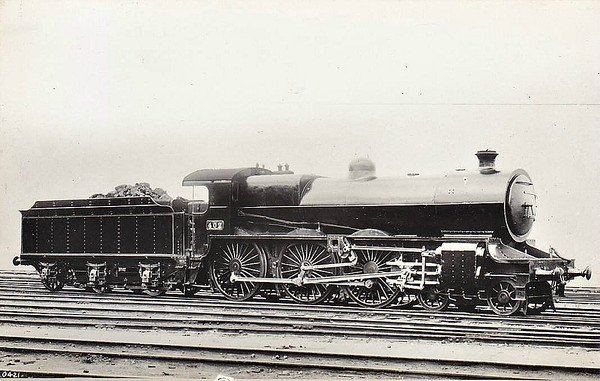
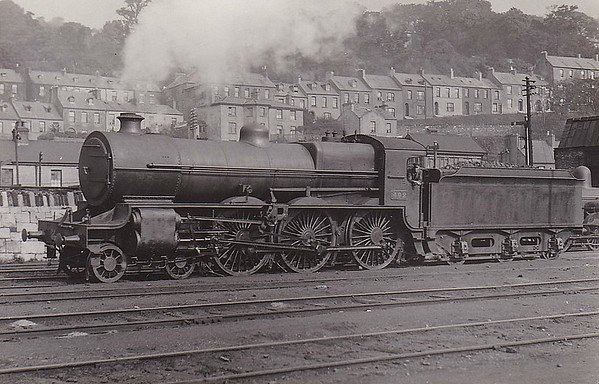
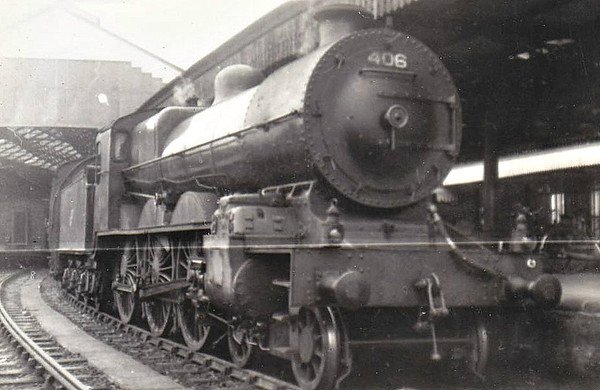
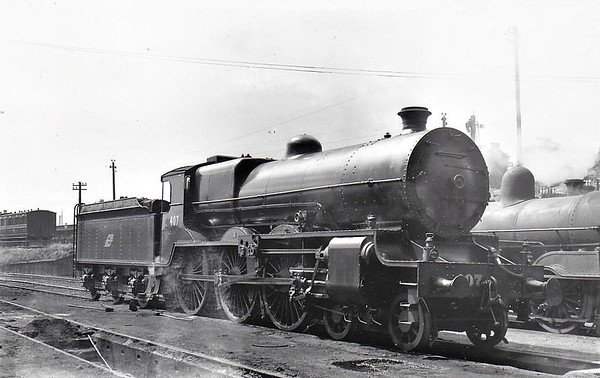
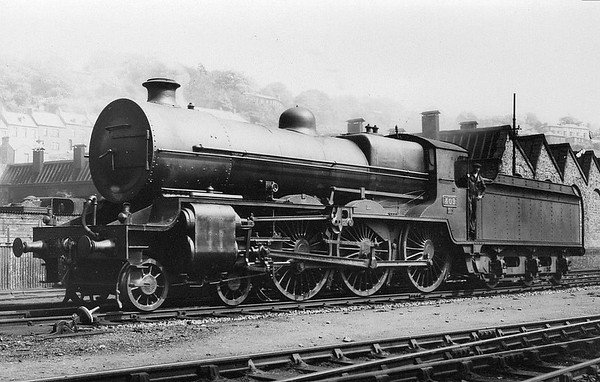
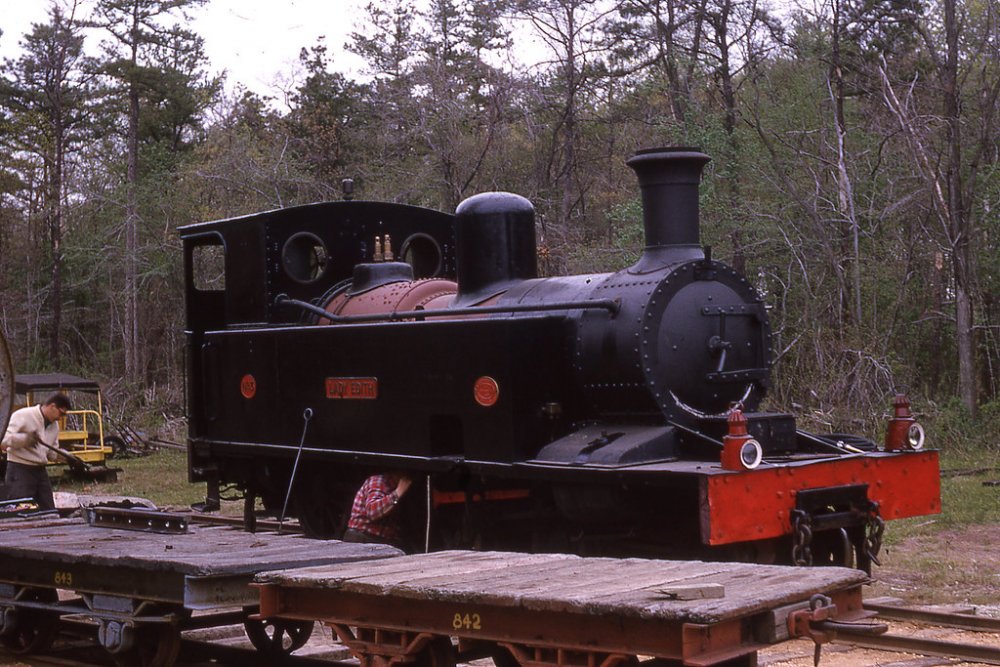
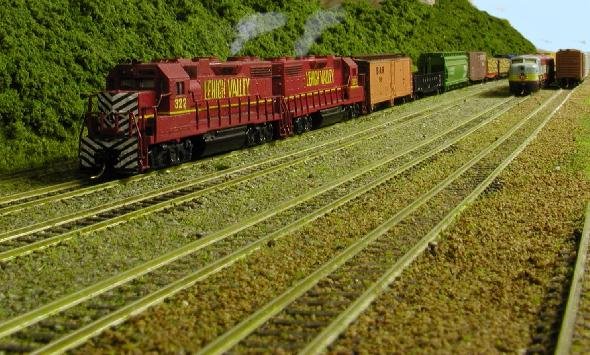
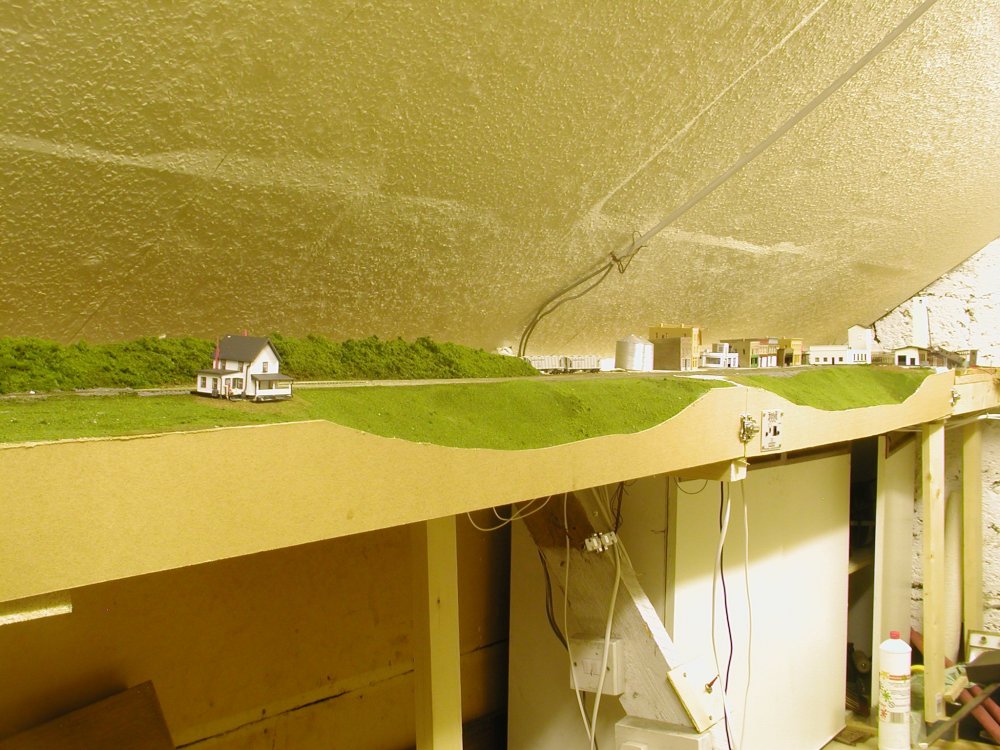
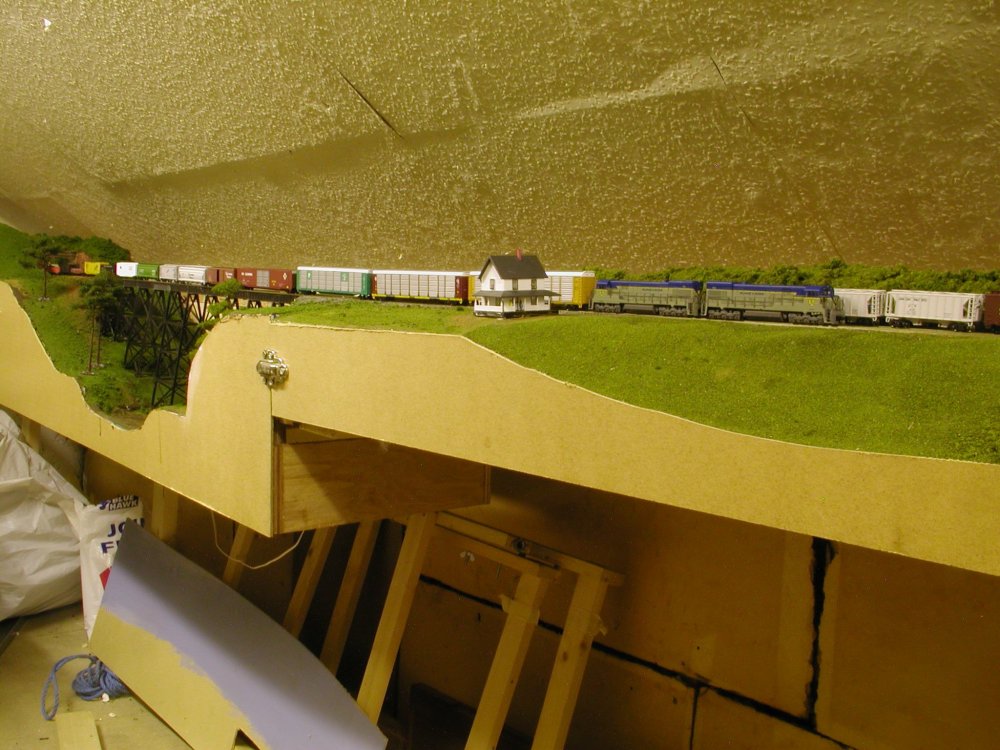

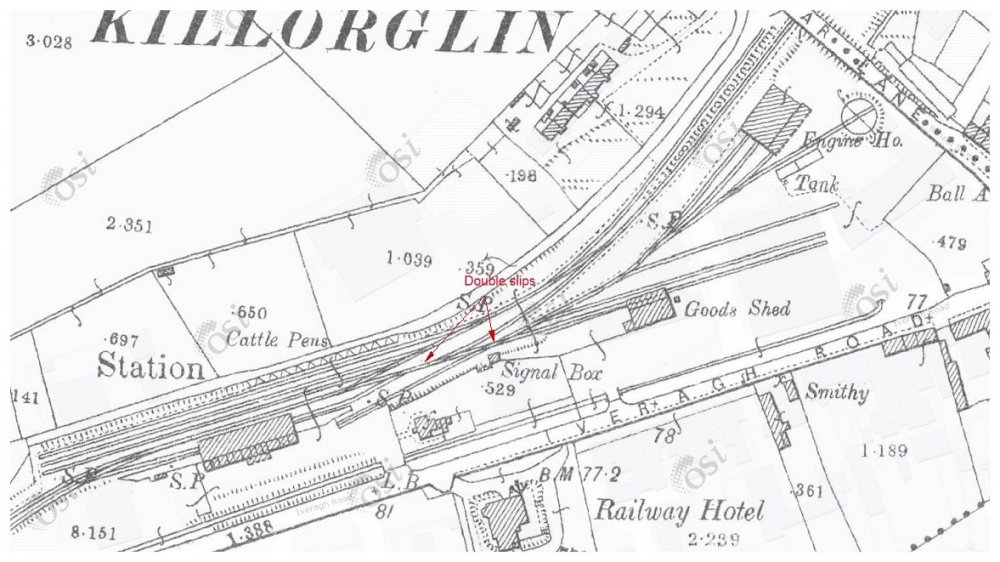
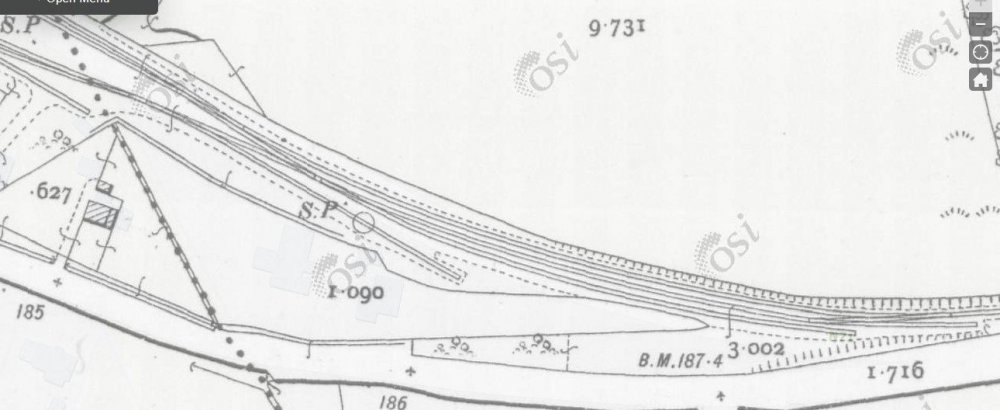
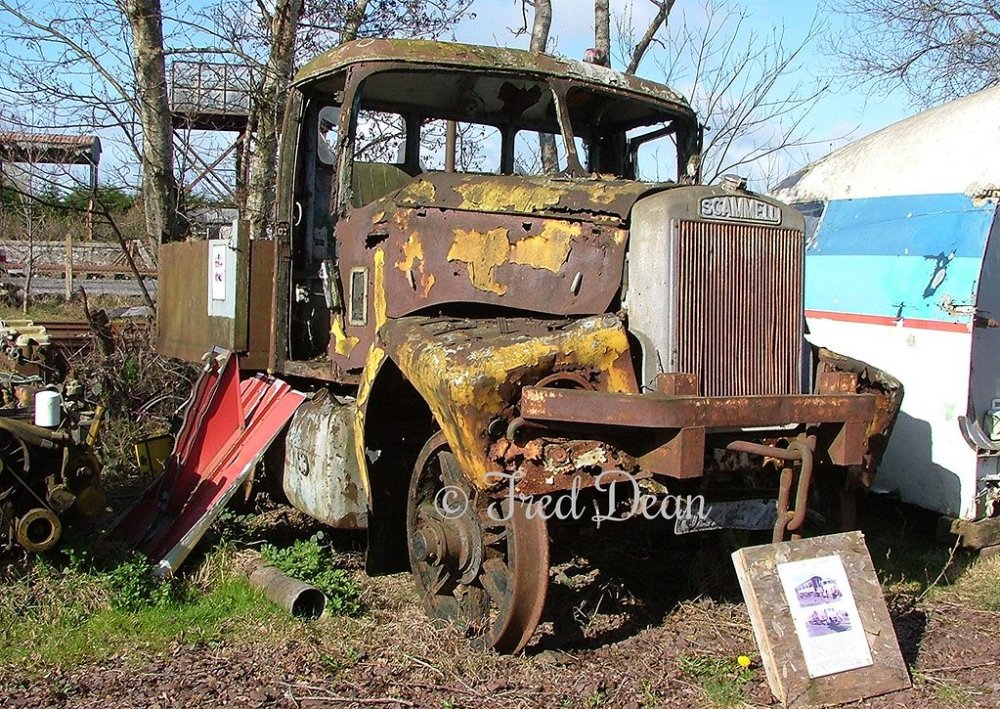
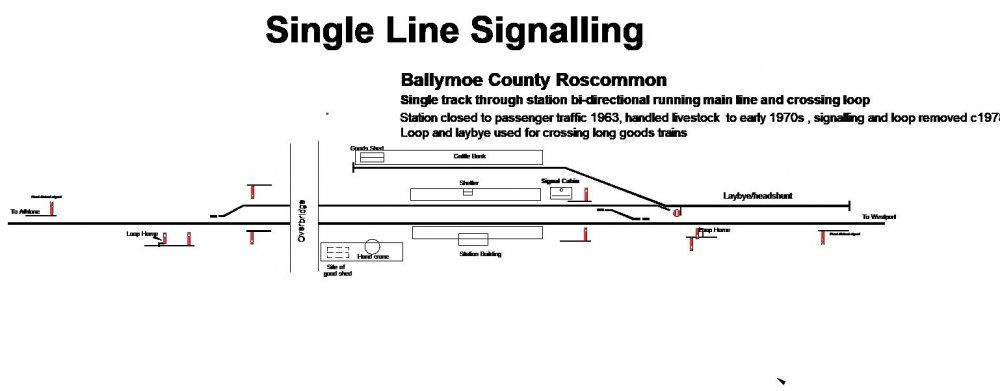
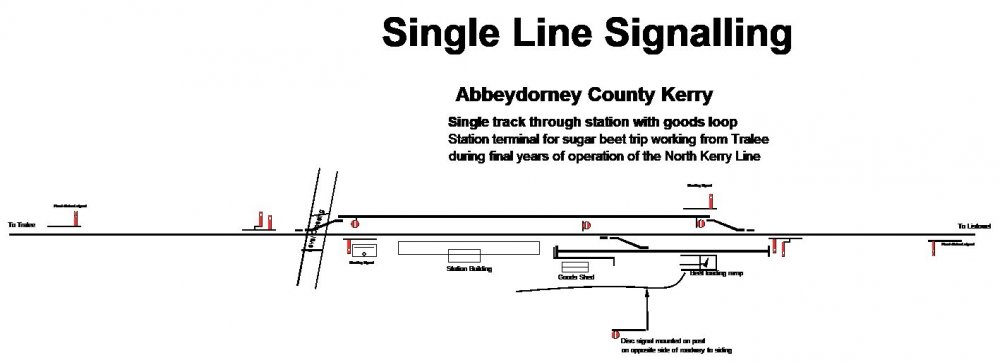
Thursday Walkabout on the Main Trunk Line
in Photos & Videos of the Prototype
Posted
Wednesday on the Main Trunk Line
Seemingly the 1st opportunity I had the time weather was fine enough to go on Drive/Walkabout. Photos were mainly between Te Kuiti and Taumaranui where the line crosses the headwaters of the Waipa and Wanganui river systems.
Tripple bogie EF 30094 & 30232 departing Te-Kuiti with a Southbound freight. The line climbs on 1:70 ruling grade for 20 miles from Te Kuiti (178') to the summit at Poro-Tarao Tunnel (1113')
Remain of the Te Kuiti Industrial Line which once served a lime works and a fertiliser depot approx a mile South of the town.
Kopaki passing place. Line follows the valley of the Mangokewa Stream above Te Kuiti the valley basically rises in a series of steps with a combination of relatively wide valley sections linked by narrow twisting gorges. Passing loops on the electrified section of the line are approx 1Km in length trains generally load to 30 bogies or 1200 Tonne glw
30094 & 30232 passing Waimiha (752') on the descent from Poro-Tarao Tunnel to Taumaranui. The line descends at 1:66 from the summit to Waimiha before flattening out to 1:70 to (Taumaranui 561')
This area is particularly remote with a mixture of remote homesteads, sheep farms and forestry workers. This was one of the last areas of native forest opened up to commercial logging in the 1940s, the last of the steam powered sawmills abandoned in 1996 https://teara.govt.nz/en/photograph/34687/endeans-mill-sawmill-building-2011 .
While it was fairly easy to keep ahead of the train on the twisting hilly sections the train has a distinct advantage on the straighter sections of line with a line speed of 100Km/h.
Wanganui Viaduct Taumaranui ( or the one that got away!) 30094 got ahead of me when I stopped for petrol in Taumaranui. I decided to stop and wait rather than catch up with the southbound as Train Control had set up a path for a North Bound train.
Growing impatient I set off to try an catch up with the South Bound or the approaching train nearer to their crossing place.
The three volcanos fresh from Owhango. The mountains on the Plateau and Southern Alps had received a fresh dusting of snow during a recent cold snap. I decided to turn back at Owhango signal lights were out at the crossing place which usually indicates that no routes have been set up or traffic due through the section. Re-tracing my steps to the Wanganui bridge signals are set up for a North Bound train but when? I cannot listen in to Train Control or the chirping of a FRED (Radio end of train device) as left my radio scanner at home!
The one that got away!. Although I had composed the shot, I had little warning of the sound of the approaching train and nothing happened when I pressed the shutter as the locos emerged from the bridge!.
Crossing side stream in the Ongarue Valley. I caught up with the train about 20 miles further up the line in the Ongarue Valley on the climb from Taumaranui to Poro-Tarao Tunnel. Ongarue Village was Mill Town with a large steam sawmill with an extensive logging railway system that used American Climax and native AG Price logging locomotives. The Ongarue Tramways have been converted to cycleways and are one of the center pieces of the Pureora Forest Park.
The railway bridge is a recent replacement of a wooden piled bridge with a low maintenance steel and concrete structure. Steelwork is Wethering steel product similar to CoreTen which does no require painting. The bridge was replaced as part of a bridge replacement programme which indicated that the New Zealand Government was committed to retaining the Main Trunk line.
Approaching Mangapehi on the descent from Poro Tarao. Mangapehi township largely abandoned following the closure of a large sawmill https://natlib.govt.nz/records/23145751?search[subject][]=Ellis+%26+Burnand+Ltd&search[subject][]=Sawmills&search[path]=places. There was an extensive private railway system that operated in conjunction with the sawmill and a local coal mine.
Back where I started 9446 passing Te Kuiti. The infrastructure is typical of the larger stations on the electrified section of the Main Trunk with gantry structures supporting the overhead, bracket signals, a long passing loop and third road serving a freight yard or loco depot. There has been lobbying at Regional and District Council level to re-establish a freight terminal at Te Kuiti presumably to handle export container traffic from the local meat processing plants, the electrified section of the Main Trunk is basically a run-through railway with little no originating traffic over the mountainous central section between Te Kuiti and Oakune.